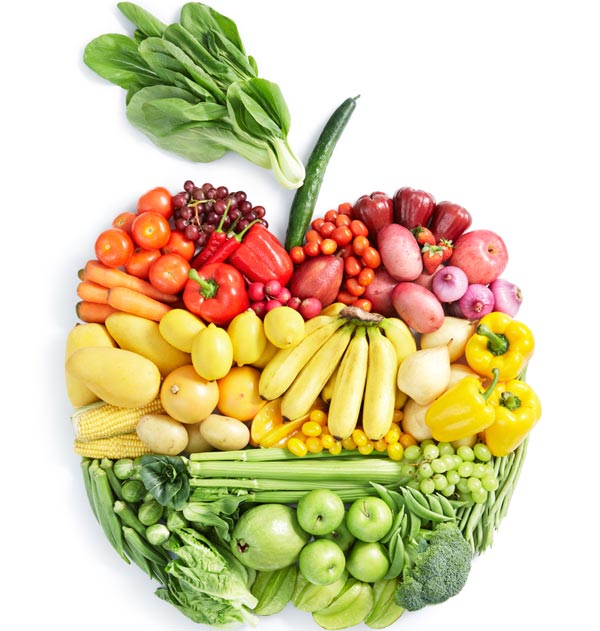Improve your diet by swapping everyday foods for nutrient-packed alternatives. Substituting unhealthy choices with beneficial foodstuffs means that you get more benefit out of every mouthful of your favorite dishes. Food swapping also means that you don’t have to sacrifice flavor, and can avoid bland, fat-free foods, and unhealthy substitutes.
Replacing artery-clogging saturated fats, found in meat, dairy and some nuts, with unsaturated fats, reduces bad LDL cholesterol levels. While all fats are high in calories, vegetable fats tend to be healthier.
Use ripe avocado in your sandwiches instead of butter, and your salt and saturated fat intake will plummet. Avocados are high in monounsaturated fats, and rich in vitamin E, B vitamins and fiber. Eating avocados regularly has been shown to lower overall cholesterol levels, and increase good HDL cholesterol levels.
Replace peanut butter with almond butter at breakfast, and halve the amount of saturated fat you consume. Almonds are packed with monounsaturated fats that reduce bad LDL cholesterol levels and boost good HDL cholesterol. They also contain more vitamin E and higher levels of magnesium and calcium. Make your own almond butter by processing toasted almonds until they form a thick paste. Dilute with olive oil, or flaxseed oil, until you get the desired consistency. Keep almond butter in the fridge to preserve its nutritional quality.
Eating green vegetables is always good for your health, but some contain far more nutrients than others. Make sure you consume plenty of cruciferous vegetables, such as cabbage, broccoli, and kale, which contain cancer-blocking chemicals.
While peas are richer in vitamin C than kale, they don’t contain cancer-fighting compounds such as sulforaphane or indole-3-carbinol. 100 grams of kale also contains over 75 percent of your RDA of beta carotene, as well as high levels of fiber, magnesium, and calcium. Steam or stir fry kale leaves, rather than boiling them, to preserve their healthy properties.
Carbohydrates are a great source of energy but many carb-rich foods, such as white bread, are nutrient poor. Unless you do a physical job, or lots of exercise, you can probably afford to cut down on carbs. Choose less energy-dense sources of carbohydrate that are higher in fiber and nutrients.
Eat whole-grain rye bread instead of white bread made from wheat. Rye bread contains little sugar and releases energy slower than bread made from white flour. Rye bread also contains more fiber than most other bread. A study published in the Nutrition Journal found that consuming high-fiber rye bread for breakfast reduced hunger pangs throughout the day. Make sure that you pick a loaf that is made from whole rye grains, rather than from white flour mixed with bran.
While brown rice is a perfectly healthy foodstuff, it isn’t as rich in nutrients as quinoa. Substitute brown rice with quinoa for a dose of protein that contains all the essential amino acids. Quinoa grain also contains higher levels of magnesium, folate, fiber, and iron. Gluten-free quinoa grains are so nutritious that they are being investigated by NASA as a potential crop for space stations.
The World Health Organisation advises you to get 75 percent of your protein from vegetable sources. In the West, most people eat too much meat and very little vegetable protein. Aim for a couple of meat-free days a week to reduce your intake of fatty meat.
Swap red meat, such as beef and pork, for soy-based protein such as tempeh, or tofu. Soy protein is a complete food that contains all the essential amino acids that your body needs. It also contains healthy phytonutrients and no fat. Cook soy protein in stir-fries, or use it as a substitute for mince.
Eat more oily, fresh fish and less tinned tuna. Tuna that is canned in oil loses much of its healthy omega-3 fats to leaching in the can. Fresh mackerel, or sardines, contain much more omega-3 and are rich in vitamin E and vitamin D. The omega-3 essential fatty acids in fresh fish reduce inflammation and joint pain.
Food swapping allows you to cook the same meals and increase their nutritional density. If you make a conscious effort to replace one ingredient in every meal with a healthier option, your diet, and your health, will improve.
Related Articles By Cathe:
6 Ways to Get More Health and Nutritional Benefits from Fruits and Vegetables
5 Healthy Food Swaps That’ll Transform Your Diet
Simple Food Swaps for a Healthy Diet
Healthy Food Changes: Makes These Switches for Greater Nutritional Benefits
6 Tips for Healthy Carb Substitutions
Lighten Up: Your Quick Guide to a Regret-Free Thanksgiving Meal
Bringing Health to Your Happy Thanksgiving Meal!
The Rundown on Thanksgiving Pies: Which Should You Eat if You’re Watching Your Waistline?


